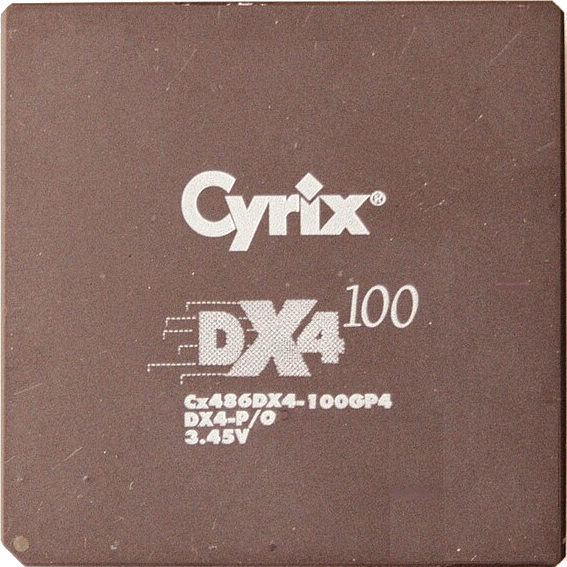Hi there,
I’m thinking about what kind of opportunities there is for a portable media center you can have with you in the car, train or whatever.
I imagine that the media center would create its own WiFi, so that devices would be able to connect to it and access the media.
I know you could do something with a Raspberry Pi, but how could this work in practice? What would be an easy way to access the media from an iPad fx? What software could be used?
As a bonus, it would be pretty cool if the media center could connect to a hotel WiFi and then create a hotspot from that.
Edit: This would be used when on the move. So you would have the media with you on the media center.
You don’t need anything as elaborate as you appear to be contemplating.
Insert a large capacity microSD card into your mobile phone and load it up with media.
Share as required.
I use iPhone and the kids have iPads, but let’s say I had a phone with expandable storage. How would I share the content from the phone to the iPads?
How much storage do they have these days? Personally I’d just load a bunch of media directly on to the devices and not worry about additional hardware or networks.
The iPads only have 64GB and I do usually download some stuff from Netflix, ATV+ and Plex if it actually worked.
If you’re carrying your media with you, you could run Jellyfin on the server to provide access to the media to anyone connected to its wifi.
Exactly. The point is to carry the media with you and access it without an actual internet connection. Especially on the go.
If I understand you correctly, I could install Jellyfin on a Raspberry Pi, setup a local WiFi on it and connect to it with an iPad that has a Jellyfin client installed?
and connect to it with an iPad that has a Jellyfin client installed?
In my experience, you don’t even need the dedicated Jellyfin client. Just opening it up in a web browser works out of the box, so that’s potentially one less thing to download/install/manage for the clients.
That said, I’ve never tried to access Jellyfin from an iPad/iPhone/Mac so it might not be as seamless as my experiences on Android/Linux based devices. But I imagine they’d be fine; just test it out before you hit the road.
Generally the app is better. Compatible with more container formats, audio formats (surround sound, Dolby digital, etc), and has hardware supported decoding for h265 video in addition to h264.
Yes, I’ve done almost exactly this while traveling. You can even carry around a couple variously configured sd cards for different use cases. I had one with jellyfin for sharing locally and also Kodi for direct HDMI connection to TVs. There is a in app on Android for jellyfin called findroid that allows offline copies from the media server, which allowed me to not need the thing powered the entire time I wanted to watch something on my phone, just long enough to download it. Adding samba shares adds a other layer of accessibility. I had another SD Card with video game ROMs for retro gaming, but this one got left at home because it requires controllers and I didn’t think I’d use it that much. I had another with “little backup box” installed for automatically backing up my photos and videos after a day out exploring with my camera.
I used a Raspberry pi 5 for all of this, running from a battery backup, because I didn’t really need a keyboard once I had remote connections to my phone sorted out. Pick a rugged case and you case just toss it in your bag of chargers. It took up about as much space as a pack of cigarettes. Another option would be the Raspberry Pi 400, built into a keyboard. A little bulkier, but maybe more resilient in the face of technical difficulties.
Yup. If the sd card doesnt have enough space for everything, you could attach an m.2 hat to it as well. https://www.raspberrypi.com/news/using-m-2-hat-with-raspberry-pi-5/
Basically, jellyfin on the pi, with the wifi setup as an access point, and whatever amount of storage you need. The pi requires 5v/5a, so you’ll probably run into issues running off the car usb power, but a cheap 30amp hour battery should run it for 6-10 hours if my napkin math is right.
You don’t need a special client, just a browser. Otherwise, yep!
My Plex server runs in my home and all my media is available outside my home. A travel server seems like a solution for a problem that doesn’t really exist.
If you are on the road or simply travelling a place with bad internet, then what?
When I know I’m travelling, I always download a few select movies and the next few episodes of whatever we’re currently watching to my devices.
Plex allows me to download using my PlexPass. My family/everyone else that uses my server download the media they want via my JellyFin server (serving the same media as my Plex server).
You read, you walk, you get to see places…
Genius! Why didn’t I think of that 😂
I use Plex’s download feature to make sure I always have music available. The same could be done for other media but I don’t bother.
At least in the case of a Jellyfin server, you can download media locally when you know you’ll be without internet
True, but if your devices, in this case; iPads with only 64GB, it quickly gets filled up.
Not sure if this helps, but e-sims are extremely cheap and can be set up on the go through an app these days. You could get a 5g plan in the area with bad internet and use it as a hotspot to download content to your other devices. I use Nomad, but there are a lot of providers with plans that are unlimited or pay by the gig—all affordable with time periods as short as 7 days.
A $10 solution, in a pinch, is a good choice.
It’s not a bad solution and I have used eSIMs before when I was traveling in Asia. However, all of these “unlimited” eSIM plans has a lot of buts. Either the speed is limited to close to unusable for streaming and/or you are limited to only use x amount of GB when using hotspot.
Also depending on the country, the coverage can be awful.
While I agree with others pointing out the oddity of a portable server in general: this sounds like a great use-case for a laptop.
Built-in battery, wifi you can broadcast out as a hotspot, and it even has a display/keyboard/mouse for troubleshooting!
An older laptop with the optical drive stripped out could have a 2.5” 5TB HDD in addition to the boot drive for some decent mobile storage.
Feels like a convoluted way of using an external hard drive.
Can you connect the hard drive to multiple devices? 😉
Probably an rpi and a travel router. But seems like the best setup would be a media server you kept at home and a VPN to connect to it from anywhere.
Why would you need a travel router?
The rpi already can be set up to hotspot it’s own wifi network.
For connecting to hotel wifi, a simple usb dongle is good enough, as discussed here: https://forums.raspberrypi.com/viewtopic.php?t=287485
In regards to VPN-ing into the media server at home - depending on where you travel, you might not have any internet or you might use up your mobile data volume.
I used a raspberry pi 3 with RaspAP in this use case in my room at home for some time. Performance was not the best, but enough for my needs back then.
Yeah you can use the rpi as the router too
Exactly and thank you for the link! 😁
I am looking for a solution where you have the media with you, so you don’t need an internet connection to watch your media.
The media server at home is a great solution that I already use, but if you have 3 people watching in the car, using mobile data, you won’t have anything left when you get to your destination😅
Pi5 may be a good solution then. Might also try a radxa x4. It has wifi 6 so more bandwidth for multiple wifi clients. Plus an m.2 slot. Only thing that sucks is there’s like no cases for it.
Fuck it, throw a 512 GB SD in an old phone and run a full jellyfin server in termux
I will definitely try this out! 😁
Can’t say ive don’t the full thing myself cause I couldnt find an easy way to mount network drives (there was a lot of jerry-rigging going on), but ive gotten to a webui before
I’m running Navidrome on my Raspberry pi (4). On my phone (Pixel 8) I use Symfonium to connect with Navidrome. When I’m travelling I use Tailscale + Mullvad + Symfonium to play music from my rpi.
I carry a mini PC, Bluetooth remote, and HDMI cable. Then media and automatic VPN to home as every hotel and Airbnb blocks Plex.
It’s a good setup, but I don’t think this would work in a car and using iPads.
Search for portable Jellyfin media server projects. It looks like there’s a few out there.
If you’re going to use this in a car, it needs to be as simple as plugging in a single device and powering it on. An over-engineered solution is going to quickly turn into a headache.
A small computer, large capacity ssd and two WiFi interfaces (2x usb dongles, or dongle plus usb).
Small computer could be anything: raspberry pi (or generic and), nuc mini pc or laptop. If you want to use it without a plug you’ll need to add a battery, usb c powered devices could be more convent to power from a battery.
A ssd is better for this use case. Not because it’s faster, but they are more resilient to being knocked about and dropped. They are also much smaller, especially M.2, and aren’t fussy about how they are mounted.
The two WiFi interfaces would allow you to create a WiFi bridge to access the internet through a WiFi network and access your media server. It would need some configuration, you may also need to have the computer act as a router if you want to use multiple devices without reconfiguring.
It may be easier to have your device act as a WiFi hotspot and have the media centre automatically connect to it. This would make it difficult for multiple devices to use it simultaneously, and you could accidentally allow the media centre to do all its updating and downloading over your mobile connection.
This type of thing is going to be expensive and troublesome to configure unless your already experienced with that sort of thing.
I think a better solution, especially if you already have a media server. Is to set your media server for external access.
To get media when you don’t have internet, buy a large capacity flash drive (or external ssd/hdd). When you have access to your media server download all the content you want on to the drive. I think iOS jellyfin can do this without much modification.
Once out of range of your media server. Delete the content you’ve watched on your device (iPad) to free up space. Connect the external drive through the usb port on the iPad, copy over the next lot of content you want to watch. Disconnect and then watch the content.
Jellyfin can download the content, but you may need another app to play it when you don’t have access to the media server.
This approach lets multiple people access a much larger amount of media, effectively simultaneously. It doesn’t require a large amount of often expensive local device storage - you use cheap external storage. It much less expensive if it breaks or gets lost and has very little configuration -if you already have a media server running jellyfin.
As others already wrote, I would go with the Plex server at home and using the “Download” feature to have some content available offline for the times you don’t have internet. You can actually set a limit for the size of the download library and individually set video and audio quality for the files.
Seen raspberry pi mentioned some times, I don’t have one, so maybe I’m wrong, but I don’t think there would be an easy way to power it up on a train for example.
Seen raspberry pi mentioned some times, I don’t have one, so maybe I’m wrong, but I don’t think there would be an easy way to power it up on a train for example.
You could fairly easily power it from a USB power bank. At least up until the Raspberry Pi 4. The Pi 5 with its weird 5 V / 5 A power requirement is a different beast. They should have gone with something standard like 9 V / 3 A PD. It might still work ok if you don’t power lots of peripherals with it.
Peripherals are one thing, handling concurrent streams, transcoding… is another one.
So in theory, a Pi can be kept alive with a power bank, but OP is expecting (as I understood) multiple hours of streaming (with “local” only access) , which includes the above tasks for multiple concurrent streams. How big of a power bank we’re talking about and how long will it last?
When you use a typical 74 Wh (“20000 mAh”) power bank, you can expect more than 12 hours of runtime, if your average power draw stays at or below 5 W. Of course you aren’t going to do much transcoding with a Pi in any case, but multiple concurrent streams shouldn’t be much of an issue.
Yeah, I was also wondering about the transcoding. And thanks for the power draw comment, great to know. Sounds manageable.
It’s true I want hours of playback, but in the car, it’s possible to draw up to 100 watt from the outlet and in trains you have 230 volt outlets. At least in Denmark.
On a plane, you usually only have USB, but I’m not sure I like the idea of setting up WiFi on a plane 😅
Maybe I’m just bad at setting up Plex, but I have never had its download feature work properly.
But also, the storage is limited on the device, so we always end up with a very small library of media, that’s quickly consumed.
The download feature is always in some state of broken, but it has gotten a lot better over the past couple of years. If you haven’t tried it in a year or so, you may have better luck now.
That’s great to hear. It has been around a year since I tried it out.
I still think you should give this one a try. Unless, you’re goal is not like having an actual solution, but doing this project as a hobby, and throwing some money at it. Which is also fine, I’ve done the same before.
Testing one or two of these media severs will cost you some hours of your time. Anything other will take much more time, effort and money.
Your suggestion is “good enough” and what I do now, but as you say, it could be fun to make a little project out of it. Figuring out what works and what doesn’t.
Travel router and VPN.
What if I have no internet? 😅
WAT!? No internet!?
Glinet makes travel routers with OpenWrt on them and internal microSD slots as well as external USB ports. Pretty easy to turn those into a media server as well.
You can install Plex on your mobile device and toggle the “share media from this device” setting. Otherwise, a steam deck would have everything an RPI has plus a GPU and a touch screen. Since there are two radios (2 and 5Ghz) on the device, you should be able to set it up as a bridge device, but I’ve not tried this personally.













